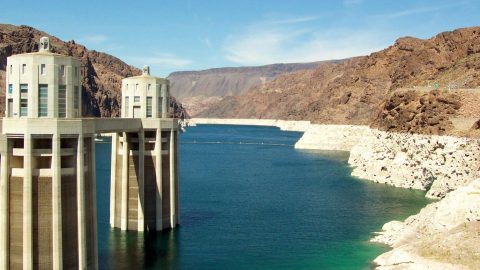Strictly speaking, water does not just disappear. Losses, if any, are only relevant across geological periods. Despite this elementary physical principle, it does make a difference how water is withdrawn from its natural cycle and used. While water may not perish on a global scale, freshwater or drinking water springs do.
Therefore, Erste Asset Management decided to take a symbolic stand in this field by publishing the water footprint of its sustainable equity funds. This is also why we and our partners are using this Investment Board to convince companies to use water responsibly.
First step: the water footprint
The establishment of the water footprint is the first important step. “Whatever can be measured, can also be administered,” as an often-used proverb goes. Given the rising pressure from investors such as Erste AM, the responsible use of water is also becoming more important – beyond the realm of pure risk management. The positive and negative selection by fund managers geared towards the reduction of the water footprint and the implied water risk of their investments increase said pressure further. This is also what our Research partners have confirmed to us. According to the representative survey carried out by our partners, almost a third of all companies regard water as a core issue of their sustainability strategy nowadays. This means an important first step has been taken.
Local solutions are necessary
In many cases, one single tool is not enough to create tangible change. In contrast to the greenhouse gases, where every ton of CO2 emitted or saved affects the world equally across the planet, water (shortages) are a local problem. The relevant unit in this context is every single, regionally delimited water catchment area, even if water is globally scarce. Therefore, cultivating fruit in the Tyrolean mountains is uncritical, whereas in the dry regions of California or Southern Spain it is problematic from the point of view of sustainability. Power plants that can resort to sea water for cooling will not require downtimes due to dry periods, whereas those that require the entire capacity of a small river will do so.
In our talks, the local component turned out to be the most important factor for finding sustainable solutions for water and for allocating capital to the right places. The ERSTE RESPONSIBLE funds contribute to this within the framework of the ESG analysis, which among other things establishes to what extent a company operates in risky areas with scarce water supply and how much it depends on high water consumption. At the same time, the analysis takes into account what measures are taken locally to improve the sustainable use of water. Our water footprint also allows for this by stating the dependence of such high-risk regions of/for companies in our funds.
The path to avoiding future water crises is an arduous one – our partners agree – but the first important steps have just been taken.
Legal disclaimer
This document is an advertisement. Unless indicated otherwise, source: Erste Asset Management GmbH. The language of communication of the sales offices is German and the languages of communication of the Management Company also include English.
The prospectus for UCITS funds (including any amendments) is prepared and published in accordance with the provisions of the InvFG 2011 as amended. Information for Investors pursuant to § 21 AIFMG is prepared for the alternative investment funds (AIF) administered by Erste Asset Management GmbH pursuant to the provisions of the AIFMG in conjunction with the InvFG 2011.
The currently valid versions of the prospectus, the Information for Investors pursuant to § 21 AIFMG, and the key information document can be found on the website www.erste-am.com under “Mandatory publications” and can be obtained free of charge by interested investors at the offices of the Management Company and at the offices of the depositary bank. The exact date of the most recent publication of the prospectus, the languages in which the fund prospectus or the Information for Investors pursuant to Art 21 AIFMG and the key information document are available, and any other locations where the documents can be obtained are indicated on the website www.erste-am.com. A summary of the investor rights is available in German and English on the website www.erste-am.com/investor-rights and can also be obtained from the Management Company.
The Management Company can decide to suspend the provisions it has taken for the sale of unit certificates in other countries in accordance with the regulatory requirements.
Note: You are about to purchase a product that may be difficult to understand. We recommend that you read the indicated fund documents before making an investment decision. In addition to the locations listed above, you can obtain these documents free of charge at the offices of the referring Sparkassen bank and the offices of Erste Bank der oesterreichischen Sparkassen AG. You can also access these documents electronically at www.erste-am.com.
Our analyses and conclusions are general in nature and do not take into account the individual characteristics of our investors in terms of earnings, taxation, experience and knowledge, investment objective, financial position, capacity for loss, and risk tolerance. Past performance is not a reliable indicator of the future performance of a fund.
Please note: Investments in securities entail risks in addition to the opportunities presented here. The value of units and their earnings can rise and fall. Changes in exchange rates can also have a positive or negative effect on the value of an investment. For this reason, you may receive less than your originally invested amount when you redeem your units. Persons who are interested in purchasing units in investment funds are advised to read the current fund prospectus(es) and the Information for Investors pursuant to § 21 AIFMG, especially the risk notices they contain, before making an investment decision. If the fund currency is different than the investor’s home currency, changes in the relevant exchange rate can positively or negatively influence the value of the investment and the amount of the costs associated with the fund in the home currency.
We are not permitted to directly or indirectly offer, sell, transfer, or deliver this financial product to natural or legal persons whose place of residence or domicile is located in a country where this is legally prohibited. In this case, we may not provide any product information, either.
Please consult the corresponding information in the fund prospectus and the Information for Investors pursuant to § 21 AIFMG for restrictions on the sale of the fund to American or Russian citizens.
It is expressly noted that this communication does not provide any investment recommendations, but only expresses our current market assessment. Thus, this communication is not a substitute for investment advice.
This document does not represent a sales activity of the Management Company and therefore may not be construed as an offer for the purchase or sale of financial or investment instruments.
Erste Asset Management GmbH is affiliated with the Erste Bank and austrian Sparkassen banks.
Please also read the “Information about us and our securities services” published by your bank.

